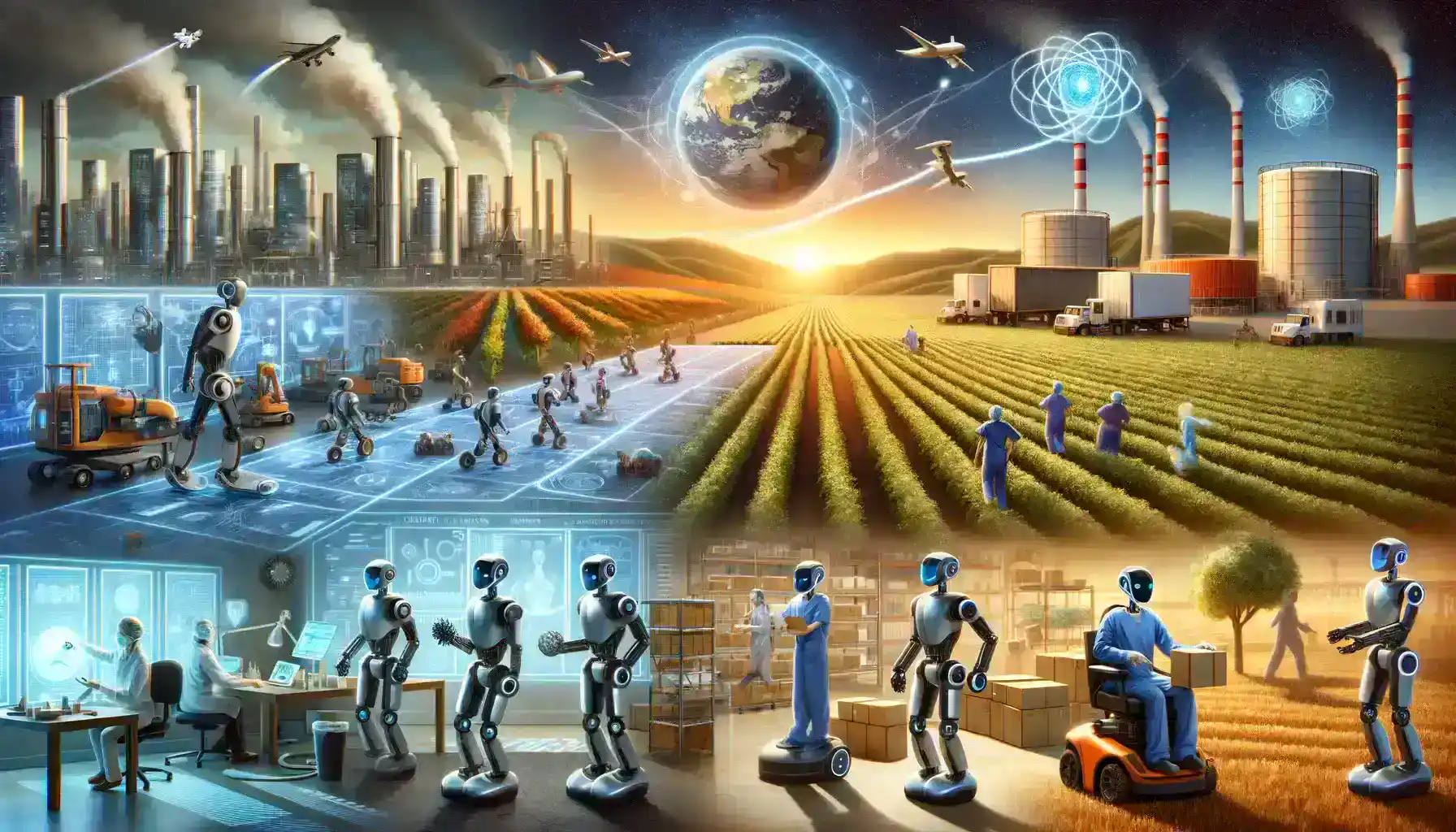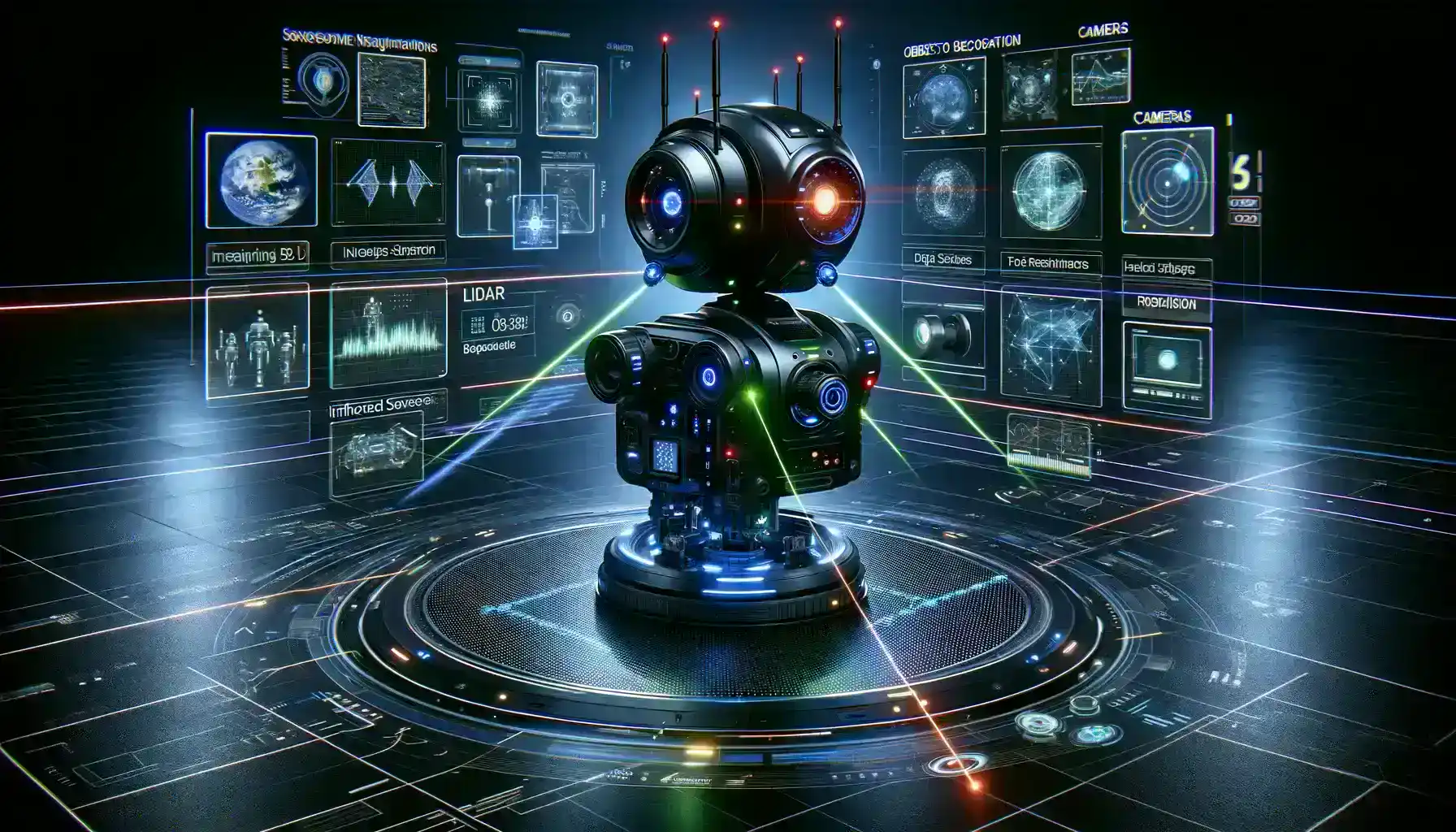Table of Contents
Autonomous robots have transitioned from the domain of science fiction into the fabric of our reality. No longer confined to the distant future, they are now swiftly establishing themselves as indispensable tools across a spectrum of industries. Their integration is ushering in transformative changes in how work is conducted, redefining conventional practices, and offering the unparalleled potential for innovation.

The impact of autonomous robots extends far beyond novelty or mere automation. These machines have permeated diverse sectors, from manufacturing and healthcare to logistics and agriculture. In doing so, they are quietly orchestrating a revolution in how tasks are accomplished. It’s imperative to delve deeper into the underlying dynamics that fuel their rise and assess the implications of this technological upheaval.
In the ensuing sections of this article, we embark on a comprehensive exploration of autonomous robots. We will navigate through their remarkable growth rate, dissect the essential components that empower them, unravel the intricate web of their functionalities, and scrutinize the profound influence they exert on contemporary work practices. Moreover, we will venture into the horizon of their future applications, providing insights into what lies ahead.
The Growth of Autonomous Mobile Robots
One of the key indicators of the impact of autonomous robots is their Compound Annual Growth Rate (CAGR). The CAGR of autonomous mobile robots has been impressive in recent years, indicating a steep upward trajectory in their adoption across industries. This growth is driven by technological advancements, cost-effectiveness, and the tangible benefits they offer.
Technological advancements have played a pivotal role in driving this growth. Breakthroughs in sensors, artificial intelligence, and robotics have endowed these machines with an unprecedented level of sophistication. This, in turn, has expanded their range of applications and made them more accessible to a broader spectrum of industries.
The impressive CAGR of autonomous mobile robots serves as a testament to their growing influence. Their expansion across industries is driven by a synergy of technological advancements, cost-effectiveness, and the tangible advantages they bring to the table. This growth trajectory suggests that the era of autonomous robotics is firmly rooted in the present, with a promising future ahead.
Crucial Components of an Autonomous Robot
Autonomous robots are marvels of engineering, encompassing an intricate web of components that work in unison to enable their autonomy. At the core of these robotic systems lie sensors, serving as their sensory organs. These sensors encompass a diverse array of technologies, including lidar, cameras, ultrasonic sensors, and more. Lidar, for instance, provides precise distance measurements, while cameras capture visual information, enabling the robot to perceive its surroundings. Ultrasonic sensors add another layer of perception, assisting in proximity detection. This rich sensor data forms the foundation of the robot’s awareness, allowing it to interpret and react to its environment in real time.
In conjunction with sensors, autonomous robots rely on sophisticated processors for decision-making. These processors are the robot’s brain, where complex algorithms and artificial intelligence come into play. They process the data collected by sensors, allowing the robot to recognize objects, map its surroundings, and make decisions based on this information. The power and efficiency of these processors have grown significantly in recent years, enabling robots to make split-second decisions, adapt to changing environments, and even learn from their experiences.
How Autonomous Robots Function

The operation of autonomous robots is an intricate dance of technologies that mimics human perception and decision-making. At the heart of their functionality are sensors, which serve as the robot’s senses. These sensors encompass a diverse range, from lidar and cameras to GPS and infrared detectors. Lidar, for instance, emits laser beams to measure distances, creating detailed 3D maps of the robot’s environment.
Cameras capture visual data, allowing the robot to recognize objects and patterns, while GPS provides global positioning information for navigation. Infrared sensors detect heat signatures and proximity, enhancing the robot’s awareness. These sensors work together to continuously gather data about the robot’s surroundings, creating a real-time sensory feed.
Once the sensory data is collected, it undergoes a process of transformation and interpretation. This is where algorithms and artificial intelligence come into play. Algorithms analyze the sensor data, identifying objects, obstacles, and patterns within the environment.
AI algorithms, in particular, enable the robot to learn and adapt, making it capable of recognizing new objects and situations. This layer of intelligence enables the robot to build a cognitive map of its surroundings, helping it understand where it is, what obstacles are in its path, and how it can navigate efficiently.
The Significance of Autonomous Control
Autonomous control stands as a pivotal cornerstone in the realm of robotic systems. At its core, it embodies the essence of independence, as it endows robots with the capacity to operate without constant human oversight. This capability brings transformative potential to various industries, particularly in situations where tasks are characterized by monotony, danger, or a need for precision.
One of the paramount advantages of autonomous control lies in its ability to enhance operational efficiency. Robots equipped with autonomous control can tirelessly execute repetitive tasks with unwavering precision and consistency. This attribute is particularly valuable in manufacturing environments, where robots can assemble products with meticulous accuracy, significantly reducing defects and production costs.
Moreover, in logistics and warehousing, autonomous control streamlines the movement of goods, expediting processes and ensuring timely deliveries. These efficiency gains not only translate into cost savings but also contribute to increased competitiveness in the global market.
Operational Instance: Autonomous Vehicles
One of the most prominent examples of autonomous robots is autonomous vehicles. These self-driving cars use a combination of sensors, AI algorithms, and control systems to navigate roads safely. They have the potential to transform transportation by reducing accidents, improving traffic flow, and increasing accessibility.
The Growing Demand for Autonomous Robots
The demand for autonomous robots spans various industries, including logistics, healthcare, agriculture, and manufacturing. Businesses are increasingly recognizing the benefits of automation in terms of cost savings, increased productivity, and improved safety. This rising demand is driving innovation in the field of autonomous robotics.
The Impact of Autonomous Robots
The impact of autonomous robots on existing working practices is multifaceted. They have the potential to:
Increase Efficiency: By automating repetitive tasks, robots can increase productivity and free up human workers for more complex and creative tasks.
Enhance Safety: In hazardous environments, such as manufacturing plants or disaster zones, autonomous robots can perform tasks without putting human lives at risk.
Reduce Costs: The automation of labor-intensive processes can lead to cost savings for businesses, making them more competitive.
Improve Precision: Robots excel in tasks that require high precision, leading to higher-quality outcomes.
Disadvantages of Autonomous Robots
While autonomous robots offer a multitude of benefits, they are not without their drawbacks and challenges. It’s essential to recognize these disadvantages to make informed decisions about their adoption and to address potential issues effectively.
High Initial Costs: The development and implementation of autonomous robots can be expensive. Acquiring the necessary hardware, software, and expertise for robotics can be a significant financial investment, particularly for small businesses.
Maintenance and Repairs: Autonomous robots require regular maintenance and occasional repairs. Ensuring their proper functioning, updating software, and replacing worn-out components can incur ongoing costs.
Complexity and Technical Expertise: Operating and maintaining autonomous robots often necessitates specialized technical knowledge. Finding skilled personnel capable of handling these systems can be a challenge and may require additional training.
Ethical and Legal Considerations: The autonomy of robots raises ethical and legal questions. Determining responsibility and liability in the event of accidents or errors can be complex. Ethical concerns also arise regarding the impact of automation on employment and the potential for misuse.
Data Privacy and Security: Autonomous robots often rely on vast amounts of data for decision-making. Ensuring the security and privacy of this data is crucial to prevent breaches and unauthorized access.
Limited Adaptability: While autonomous robots excel in predefined tasks, they can struggle with unstructured or rapidly changing environments. Adapting to unforeseen circumstances may be challenging, leading to inefficiencies or failures.
Dependency on Technology: Overreliance on autonomous systems can leave organizations vulnerable to disruptions caused by technical failures, cyberattacks, or system malfunctions. Human workers may lose the ability to perform tasks if overly dependent on automation.
Job Displacement: In certain industries, the widespread adoption of autonomous robots may lead to job displacement. As automation takes over routine tasks, there is a concern about the impact on employment, particularly for low-skilled workers.
Lack of Creativity and Intuition: Autonomous robots operate based on algorithms and data, lacking the creativity and intuition that humans possess. This limitation can be a disadvantage in tasks that require innovation or subjective judgment.
Resistance to Adoption: The introduction of autonomous robots into workplaces may face resistance from employees who fear job loss or from individuals uncomfortable with interacting with machines instead of humans.
Conclusion
Autonomous robots are poised to transform existing working practices across industries. Their rapid growth, crucial components, and capabilities make them a force to be reckoned with. While there are challenges and ethical considerations to address, the potential benefits of autonomous robots are immense, promising a future where automation and human collaboration coexist harmoniously.